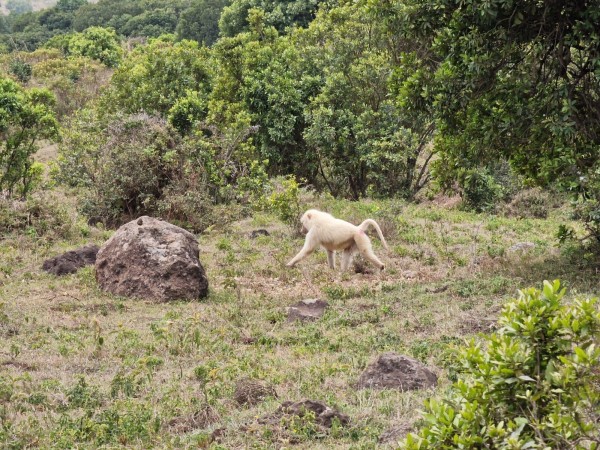 Luxury travel operator Tanzania Specialist reports a significant increase in sightings of rare albino animals throughout northern Tanzania. Making up less than 1% of the wildlife population, Tanzania Specialist Safari Guide Joseph Abel Laizer explains the phenomenon sweeping the Tanzania tourism industry.
Luxury travel operator Tanzania Specialist reports a significant increase in sightings of rare albino animals throughout northern Tanzania. Making up less than 1% of the wildlife population, Tanzania Specialist Safari Guide Joseph Abel Laizer explains the phenomenon sweeping the Tanzania tourism industry.The experts at luxury travel company Tanzania Specialist are excited to report an increase in sightings of rare albino animals in the northern safari circuit of Tanzania, Africa in recent weeks. Among the albino animals spotted are a giraffe and zebra in the famous Serengeti, as well as a baboon and a buffalo in other parts of the country. “It’s extraordinary,” states experienced Safari Guide Joseph Abel Laizer (38) who works for Tanzania Specialist in Arusha.
“Just today I recorded an albino baboon after spotting a different albino baboon with her non-albino baby in Arusha National Park last week,” continues Laizer, who grew up in the Arusha region in the Maasai village Monduli. “Not long ago, people were amazed to witness a completely white buffalo in the Tarangire region and this month guests spotted a white zebra who had just crossed the Mara River in northern Serengeti.” As our experts report, several reasons contribute to the recent uptick in albino animal sightings in this part of Africa.
Why are there more albino animals in Tanzania?
Albinism is a condition that affects the production of melanin in the body. Melanin is a pigment that provides pigmentation for skin, eyes, hair, fur and claws in animals, but albino animals lack that (almost) completely. The condition is similar in humans, with an unfortunate stigma persisting in some Tanzanian cultures.
Albinism occurs if both parents have the specific recessive gene, which means albinism can stay dormant for many generations. Laizer assesses that this is the reason behind the rapid increase in albino animal sightings in recent weeks and years. “We know there were quite some albino animals fifty or sixty years ago. But of course, tourism in the 1960s was not as it is today. There were few professional guides around and no social media, so it isn’t easy to accurately assess the historical numbers. For generations after that, we didn’t see many albino animals. I started working as a guide 15 years ago, and it’s the past seven years that we’ve really noticed this increase.”

With increased environmental protection initiatives and a thriving Tanzania tourism market, one obvious reason for the increased albino animal sightings is improved visibility. Another reason, however, is increased human activity affecting essential migration corridors for animals.
Laizer explains more: “The migration corridors for the animals have been closed up slowly in recent years. There is a corridor from Tarangire and Lake Manyara to Monduli, Longido, and Arusha National Park and from there to Mkomazi National Park and Amboseli National Park in Kenya. Villages block parts of that corridor, so animals get stuck in one area. This has led to inbreeding over the years. Because albinism is genetic, this most likely causes an increase in albinism.”
Spotting a rare animal on safari
Tanzania is a bucket-list safari destination, with Tanzania Specialist guests reporting sights of all of the famous Big Five African game animals after spending hours in the bush with trained safari guides and wildlife experts. Spotting albino animals, however, is even more of a challenge, making up less than 1% of the wild animals in Tanzania. So what are the chances of spotting them? “Though seeing one of these beautiful animals in the wild is an incredible experience, I can never make any promises to our safari guests. I’m afraid the chances of spotting one of these rare animals during your time here are one in a million.”
“But with the albino Tangarire buffalo seen by Tanzania Specialist guests in September, the albino giraffe seen in Serengeti just a few days ago, three or four albino baboons living in Arusha National Park, and an albino zebra spotted during the Great Migration,” concludes Laizer. “Who knows – people might just get lucky.”
For more information on discovering Tanzania with Tanzania Specialist or to speak with a Tanzania Specialist guide on the ground for interviews and more, contact the team at safari@tanzaniaspecialist.com
Media Contact
Company Name: Tanzania Specialist
Contact Person: Esther Buurvrouw
Email: Send Email
Phone: +255 693 680 032
Country: Tanzania
Website: https://tanzania-specialist.com/

